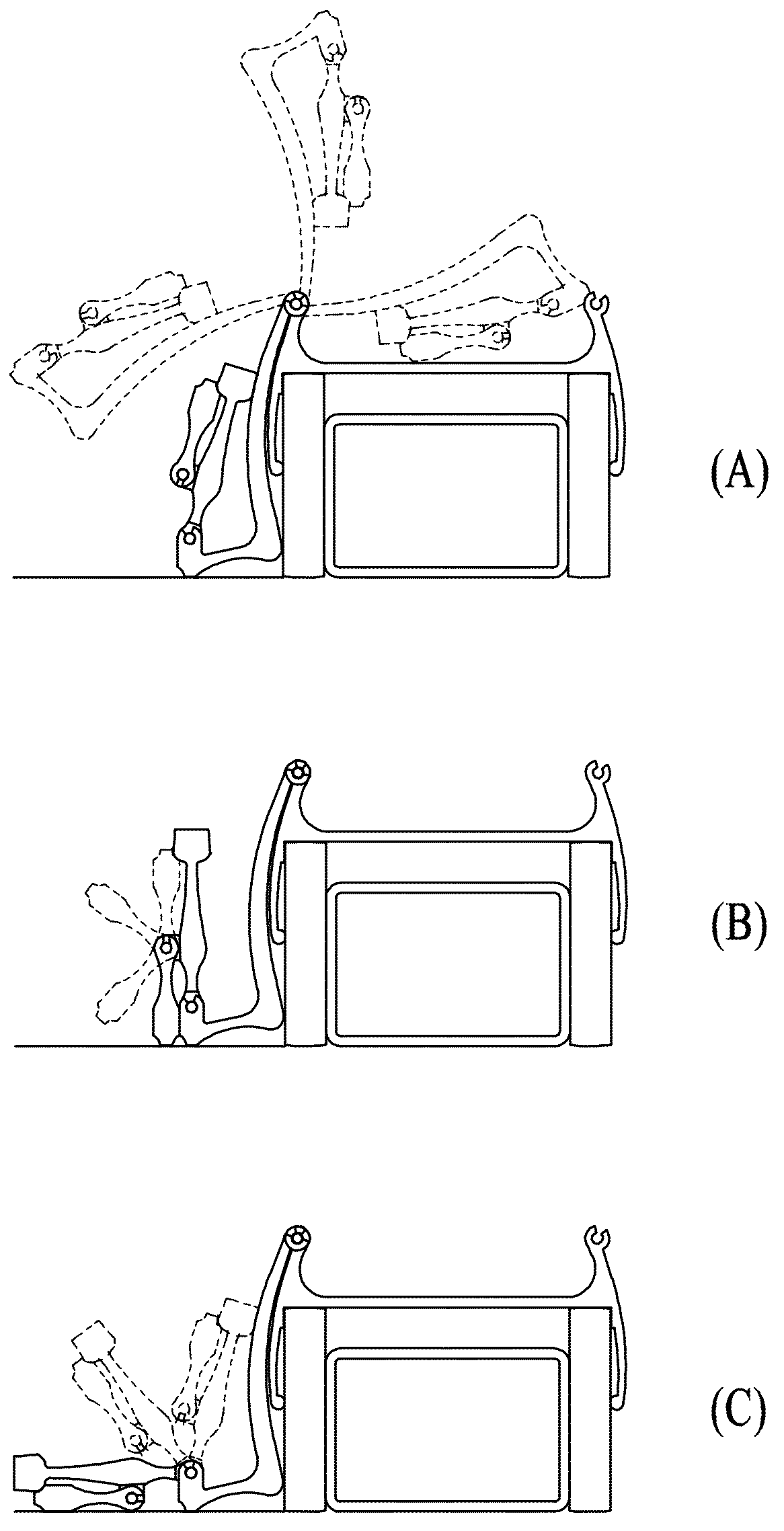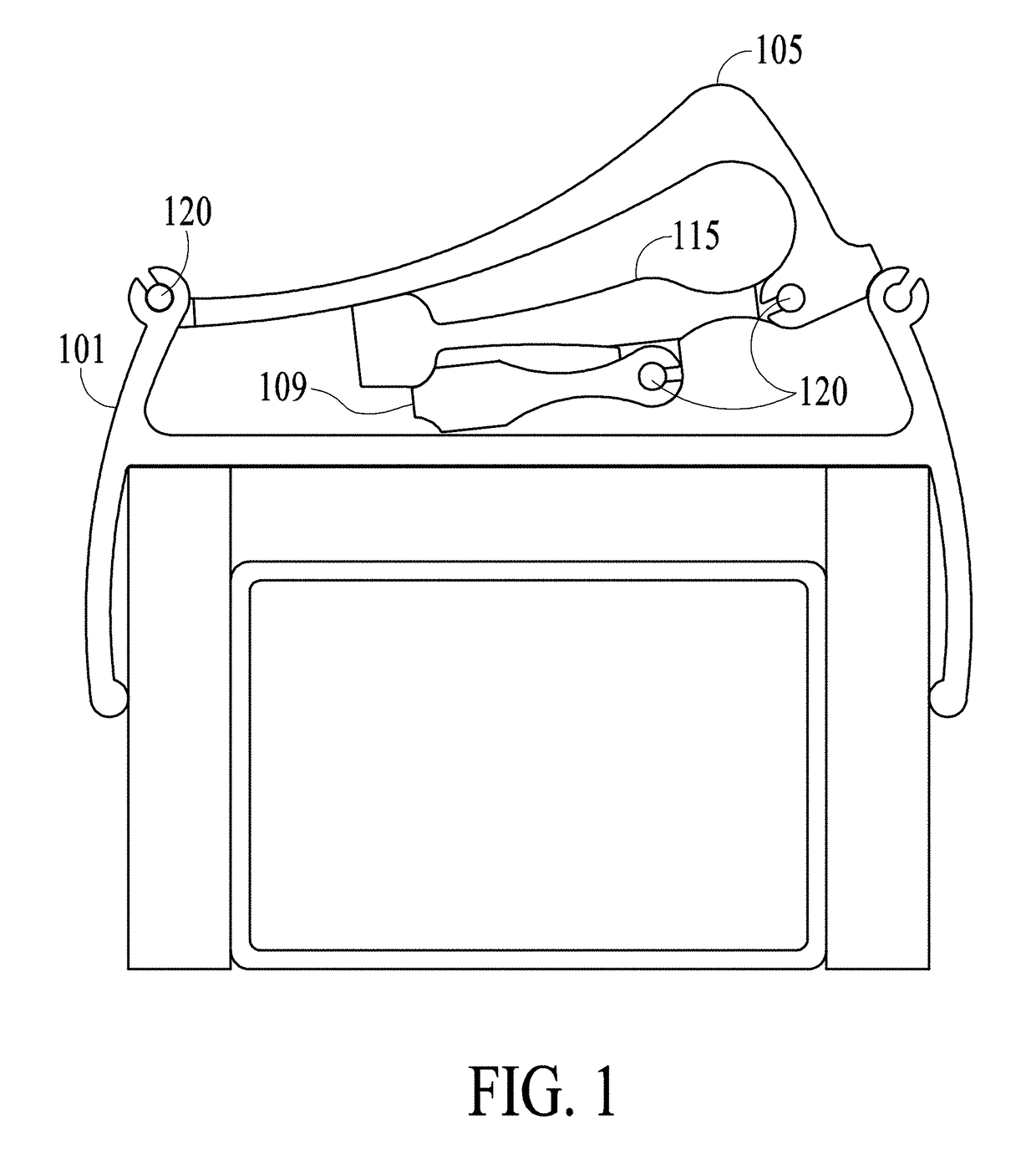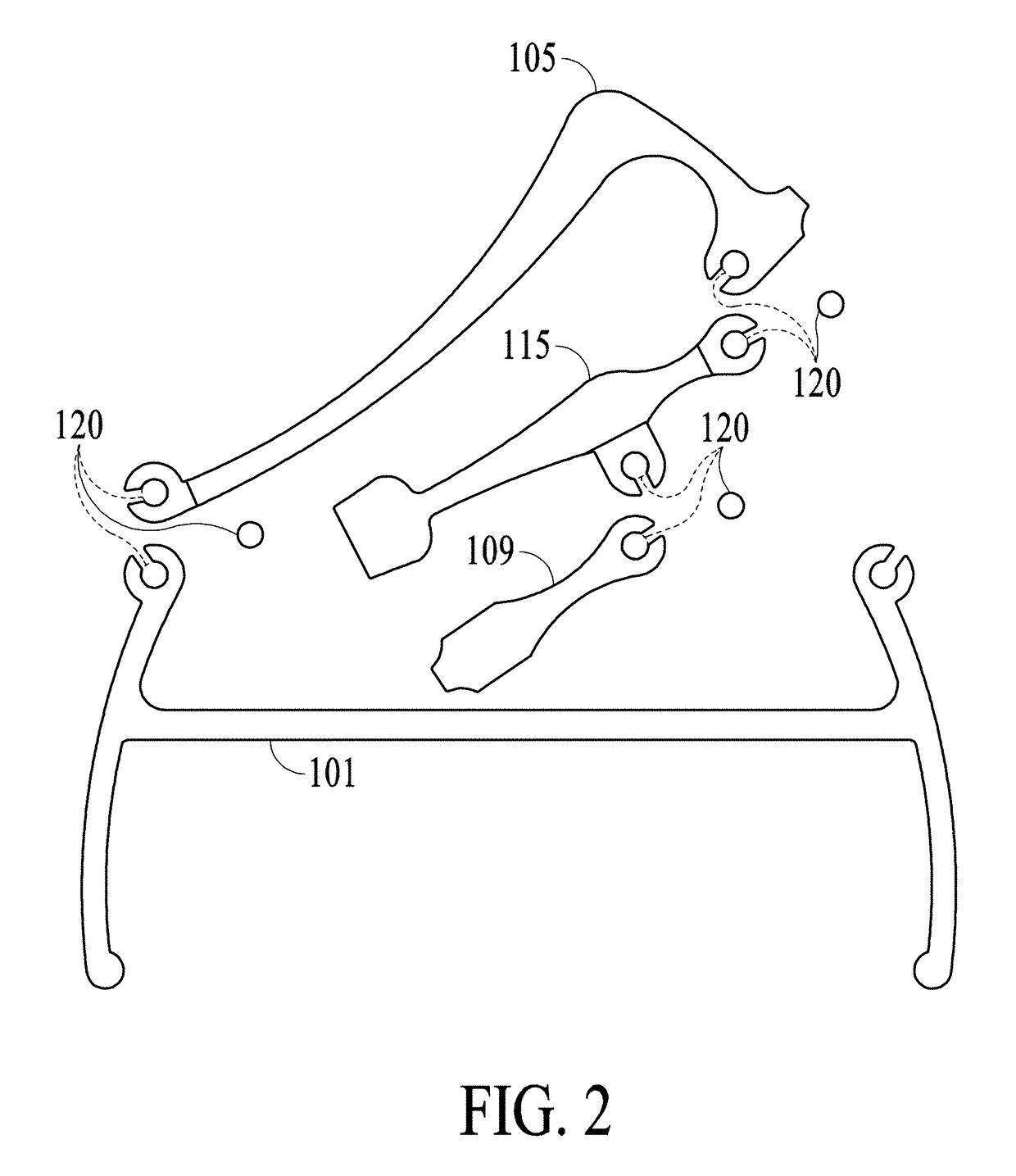Flip-down table-saw fence
a table saw and fence technology, applied in the field of cabinetmaking, can solve the problems of a great deal of time and money to do the math, waste of process parts, and high cost of time and money to corr
- Summary
- Abstract
- Description
- Claims
- Application Information
AI Technical Summary
Benefits of technology
Problems solved by technology
Method used
Image
Examples
Embodiment Construction
[0021]For the normal kitchen base cabinets, the height and depth are always the same. These dimensions can be referenced as “CONSTANTS.” For example, the sides of the cabinet are a function of both the height and depth and are the same whether the cabinet is 10 inches wide or 30 inches wide. It is efficient to stock cabinet parts with standard heights and depths. i.e. “CONSTANTS.” The sides can be pre-cut to their height and depth, routed and drilled with holes in high volume more efficiently than job by job. With all the set-ups that have to be accurate, running these parts in high volume will save a lot of time per part. Alternately, parts can be ordered this way. The other “CONSTANTS” (the top, bottom, back, shelf, drawer bottom, and drawer front and back) can be machined in eight foot lengths in high volume while the business is in a slow season or ordered this way.
[0022]On most cabinets, it is only the width of the cabinet that changes. Anything that is a function of the width,...
PUM
| Property | Measurement | Unit |
|---|---|---|
| depth | aaaaa | aaaaa |
| depth | aaaaa | aaaaa |
| depth | aaaaa | aaaaa |
Abstract
Description
Claims
Application Information
 Login to View More
Login to View More - R&D
- Intellectual Property
- Life Sciences
- Materials
- Tech Scout
- Unparalleled Data Quality
- Higher Quality Content
- 60% Fewer Hallucinations
Browse by: Latest US Patents, China's latest patents, Technical Efficacy Thesaurus, Application Domain, Technology Topic, Popular Technical Reports.
© 2025 PatSnap. All rights reserved.Legal|Privacy policy|Modern Slavery Act Transparency Statement|Sitemap|About US| Contact US: help@patsnap.com



